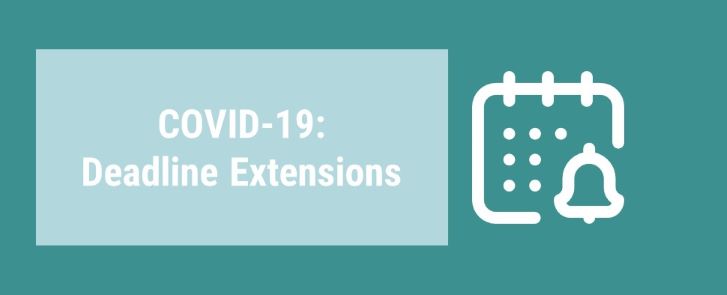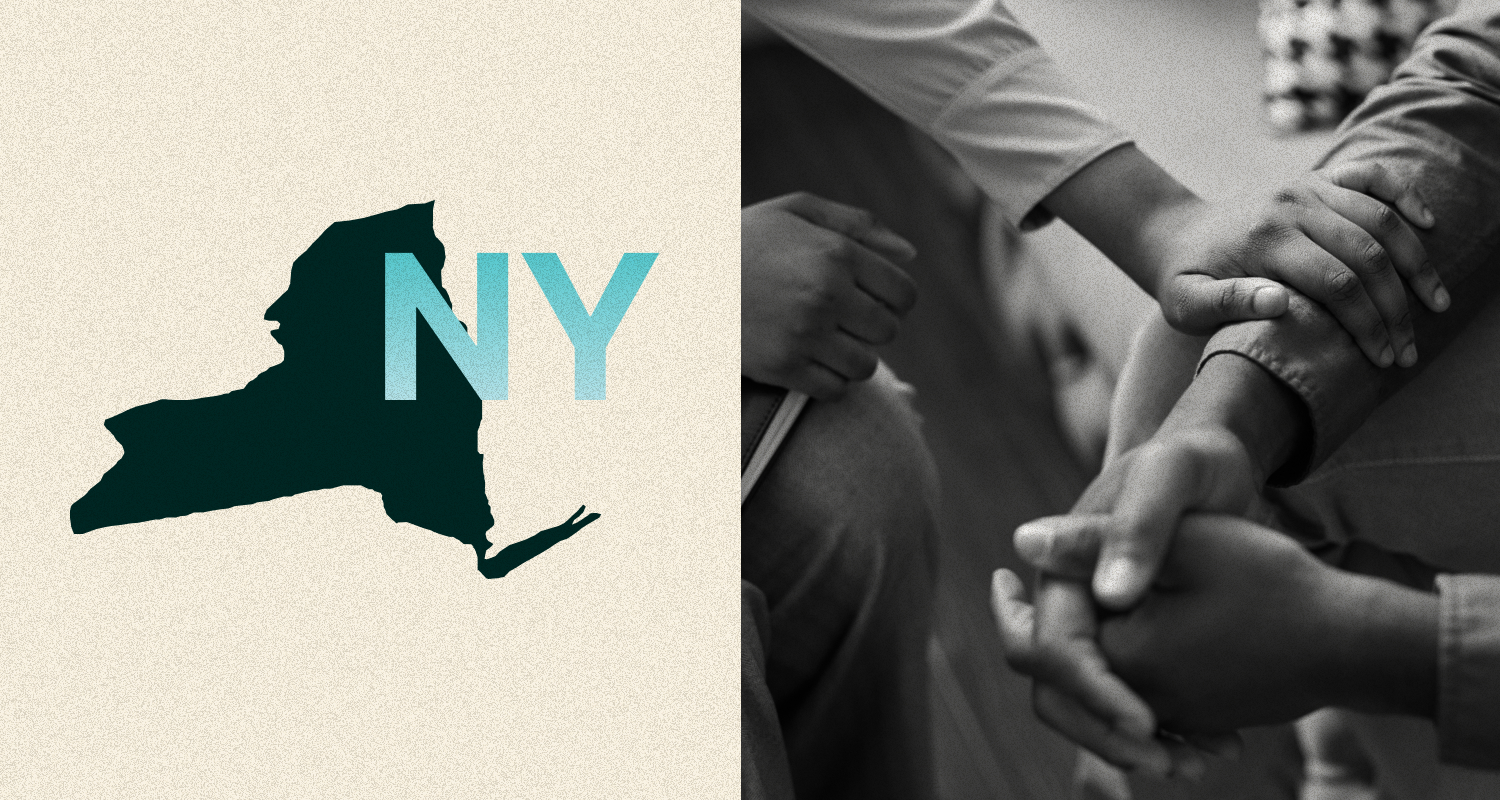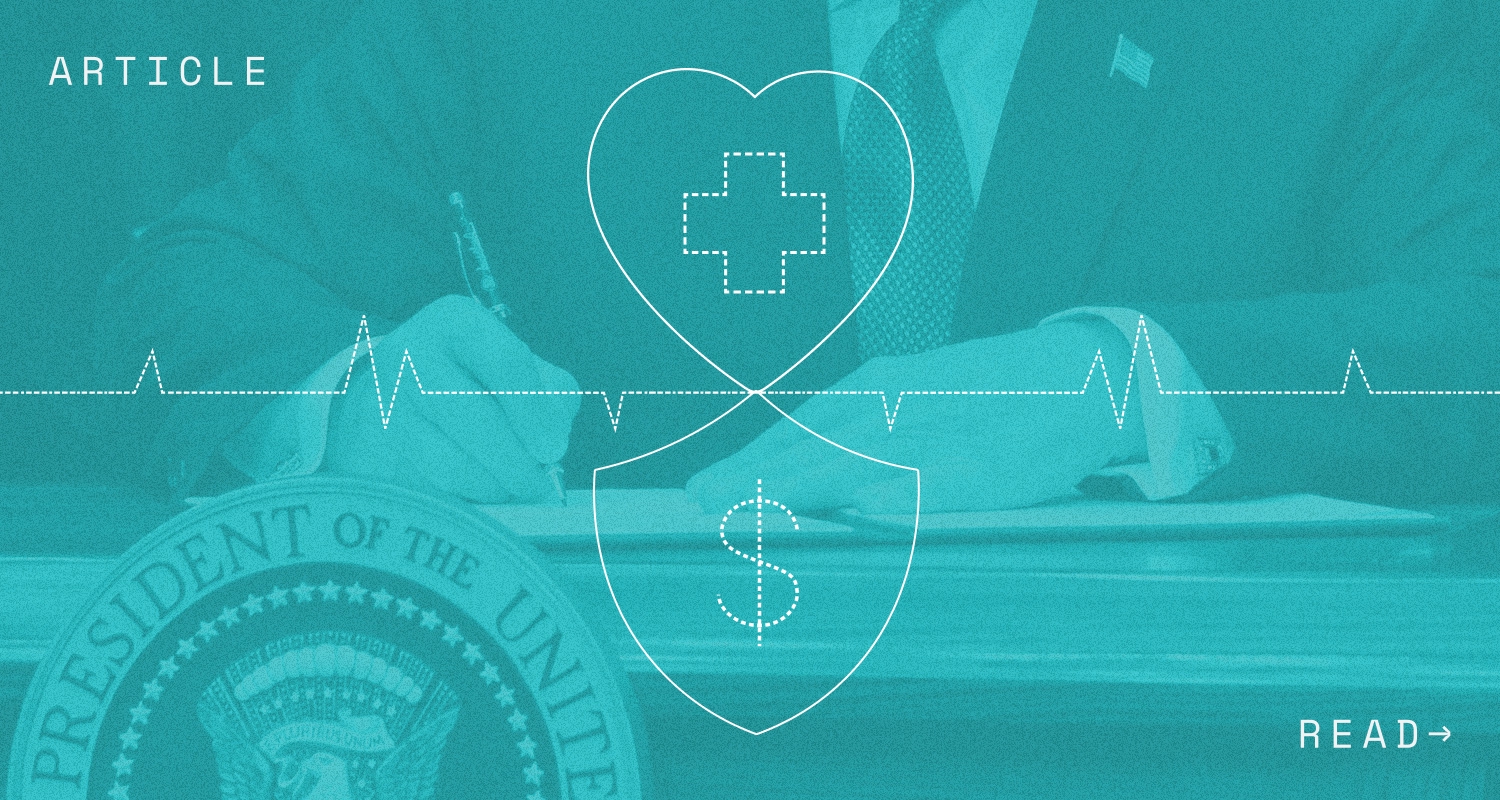Updated 5/21/20.
On April 28, 2020, the Department of Labor (DOL) Employee Benefit Security Administration (EBSA) and the Internal Revenue Service (collectively referred to as the “Agencies”) released Notice 2020-01 (“Notice”) and Final Rule Extension of Timeframes (“Final Rule”), which extends certain employer and employee deadlines in light of the COVID-19 health care emergency.
The Notice and Final Rule extend certain deadlines that fall within the “Outbreak Period,” which began on March 1, 2020 and ends 60 days after the end of the National Emergency, or such other date announced by the Agencies in a future notice. Please note that we do not yet know the date for the end of the Outbreak Period.
Generally, the applicable deadlines are “tolled” or “paused” during the Outbreak Period, giving plan sponsors additional time to meet their obligations and participants and beneficiaries additional time to exercise their rights, specifically:
- Employers have additional time to:
- Furnish required notices, disclosures, or other documents to participants and beneficiaries pursuant to their obligations under Title I of the Employee Retirement Income Security Act or “ERISA” (as described in further detail below)
- Provide the COBRA election notice to COBRA qualifying beneficiaries
- Participants and beneficiaries have additional time to:
- Request special enrollment under their HIPAA Special Enrollment Rights
- Elect COBRA continuation coverage and make COBRA premium payments
- File benefit claims, appeal adverse benefit determinations, request an external review, and perfect an external review request
The Notice and Final Rule apply to all group health plans (including fully insured, self-insured, and level funded plans), disability plans, and other employee welfare plans. The Notice and Final Rule are effective immediately.
Relief for Employers
Employers will not be in violation for failure to timely furnish a notice, disclosure, or document for their group health plans (GHPs), disability plans, or pension plans, that must be furnished during the Outbreak Period (which begins on March 1, 2020 and ends 60 days after the end of the National Emergency) as long as the plan acts in good faith and furnishes the required notice as soon as administratively practicable. See Notice 2020-01.
- This relief applies to all notices and disclosures required under Title I of ERISA, which include Summary Plan Descriptions (SPD), Summary of Material Modifications and Reductions (SMM and SMR), Summary Annual Reports (SAR), COBRA Notices, Notice of Special Enrollment Rights, etc. For more, see the DOL EBSA Reporting and Disclosure Guide for Employee Benefit Plans for the required notices under Title I of ERISA.
- Electronic Disclosure: Employers can furnish notices and disclosures electronically during the Outbreak Period, including via email, text messages, and continuous access websites, if they reasonably believe that plan participants and beneficiaries have access to these electronic communication mediums.
Relief for Plan Participants and Beneficiaries
HIPAA Special Enrollment Rights
HIPAA special enrollment rights allow eligible employees and/or their dependents to enroll in GHP coverage mid-year if one of the following events occur:
- Loss of eligibility for coverage under the plan due to termination of employment or reduction in hours, loss of dependent status due to age, divorce, or death of the employee;
- Exhaustion of COBRA coverage;
- Acquisition of a new spouse or dependent by marriage, adoption, placement for adoption, or birth;
- Loss of eligibility for coverage under Medicaid or the Children’s Health Insurance Program (CHIP); or
- Gaining eligibility for state premium assistance under a state’s Medicaid plan or CHIP.
The Final Rules extend the deadline for individuals to exercise their HIPAA special enrollment rights (i.e. enroll in coverage). In practice, coverage will likely be effective retroactively to the date of the HIPAA special enrollment event and individuals will have to pay for premiums for the retroactive time period. Employers should check with their carriers on how they will implement this provision.
The “normal” deadline to enroll and the extension provided under the COVID-19 Final Rules are compared below:
|
Normal Rule |
COVID-19 Final Rule Extension |
|
Individuals must exercise their rights within 30 days of the event (or 60 days in the case of a change related to Medicaid or CHIP eligibility) |
The Final Rules extend the timeframe for which individuals can exercise their special enrollment rights:
|
Example of Special Enrollment COVID-19 Extension: (Adopted from Ex. 2, page 12, Final Rules)
Q: Sarah previously declined coverage under her employer’s plan. On March 31, 2020, Sarah gave birth and wants to enroll herself and her child onto her employer’s plan. Her employer’s open enrollment begins on November 15, 2020. Assuming the National Emergency Period ends on April 30, 2020, when can Sarah enroll in her employer’s plan?
A: 30 days after the end of the Outbreak Period.
Birth is a HIPAA special enrollment right and Sarah has the right to enroll onto her employer’s plan beginning on March 31, 2020. Since Sarah’s right to enroll occurs during the Outbreak Period, her deadline to enroll won’t start “running” until after the end of the Outbreak Period.
The Outbreak Period will end on June 29, 2020 (which is 60 days after the end of the National Emergency Period). Sarah will have until 30 days after June 29, 2020 to enroll in her employer’s plan, which is July 29, 2020. Sarah will have 30 days after the Outbreak Period because that is the “normal” time she would have had to enroll after the birth of her baby.
This means Sarah has from March 31, 2020 until July 29, 2020 to enroll onto her employer’s plan under the special COVID-19 rules. Prior to the issuance of the rules, Sarah would have only had until April 31, 2020 to enroll in coverage (30 days after the birth).
COBRA Continuation Coverage
Certain employers must offer COBRA continuation coverage to qualified beneficiaries if a COBRA qualifying event causes them to lose employer-sponsored healthcare coverage.
The Final Rules extend various COBRA deadlines. The “normal” COBRA deadlines and the extension provided under the COVID-19 Final Rules are compared below:
|
|
Normal Rule |
COVID-19 Final Rule Extension |
|
COBRA Election Notice |
Generally, employers who are plan administrators have 44 days to issue a COBRA election notice to qualified beneficiaries (30 days to notify the plan administrator + 14 days). Employers must notify the plan of a death of an employee, termination, reduction in hours, entitlement of Social Security benefits, or retirement within 30 days. |
The Final Rule provides that employers do not have to count the days during the Outbreak Period when determining their deadline to provide a COBRA election notice (See Page 11, Final Rule) – though we recommend employers continue to comply as normal (if they are able).
|
|
Notify Plan of a COBRA Event |
Employees and dependents must notify the plan administrator (i.e. employer) of a divorce or legal separation and if a dependent child loses eligibility for dependent status under the terms of the plan (e.g. reaching the age of 26) within 60 days. For COBRA qualified beneficiaries to qualify for a COBRA extension due to a disability, they must notify the plan of a Social Security Administration disability determination within 60 days. |
|
|
Elect COBRA Coverage |
COBRA qualified beneficiaries have at least 60 days to elect COBRA coverage. The 60 days begins from the date the election notice is provided, or the date the qualified beneficiary would lose coverage due to the qualifying event, whichever is later. |
|
|
COBRA Premium Payments |
COBRA coverage may be terminated for failure to pay premiums timely. Plans are required to provide the below minimum grace period for individuals to make premium payments: Initial payment: Individuals have at least 45 days after their initial COBRA election to submit payments. Subsequent payments: Individuals have at least 30 days after the due date of the premium to submit payments. |
COBRA Coverage During the Outbreak Period
|
Examples of COBRA Coverage COVID-19 Extensions:
The below examples assume the National Emergency will end on April 30, 2020.
COBRA Election Extension: (Adopted from Ex.1, pages 11-12, Final Rules)
Q: Joe experiences a reduction in hours and loses eligibility under his employer’s GHP (which is a COBRA qualifying event). Joe is provided with a COBRA election notice on April 1, 2020. What is Joe’s deadline to elect COBRA continuation coverage?
A: 60 days after the end of the Outbreak Period.
Since Joe’s deadline falls within the Outbreak Period, the Outbreak Period is ignored for purposes of determining Joe’s deadline to elect COBRA coverage. Assuming the National Emergency ends on April 30, 2020, the Outbreak Period will end on June 29, 2020 (which is 60 days after the end of the National Emergency Period). This means the clock starts “running” on June 29, 2020, and Joe has 60 days (the “normal” time he would have had to elect COBRA coverage) after that date to elect COBRA coverage, which is August 28, 2020.
COBRA Premium Payment Extension: Part 1 (Adopted from Ex.3 and Ex. 4, pages 12-14, Final Rules)
Q: On March 1, 2020, Mary was receiving COBRA continuation coverage. More than 45 days had passed since Mary elected COBRA. Mary’s COBRA premiums are due on the first of the month and under the terms of the plan, participants have 30 days after the due date before coverage is terminated. Mary paid her February premium on time but failed to pay her premiums for March, April, May, and June. Does Mary lose her COBRA coverage and if so, for which months?
A: Mary must pay her premium payments for March, April, May and June 30 days after the end of the Outbreak Period. If she pays her premiums for all four months by then, she will have COBRA coverage during the entire period.
Since Mary’s deadline to make her March payment (March 31, 2020) was within the Outbreak Period, she can wait until after the Outbreak Period to make her payments.
Again, assuming the Outbreak Period ends on June 29, 2020, the deadline for Mary to make her COBRA premium payments for all four months will be on July 29, 2020, which is 30 days after the end of the Outbreak Period. In the interim, Mary is eligible to receive coverage for March, April, May and June.
Q Part 2: Assume the same facts as the above example, except that Mary only made a payment for two months of premiums by July 29, 2020 (instead of all 4 months that were due). For how long does Mary have COBRA continuation coverage?
A: Mary is entitled to coverage for March and April 2020 but is not entitled to COBRA continuation coverage for any month after April 2020. The plan would not be required to cover Mary’s benefits or services that occurred after April 30, 2020.
Claims Procedures Timeline
ERISA employee benefit plans (including group health plans and healthcare FSAs) must establish and maintain a procedure for governing the filing and initial disposition of benefit claims and provide claimants with a reasonable opportunity to appeal an adverse benefit determination.
For fully insured plans, claims procedures are usually handled by the insurance carrier. For self-insured plans, claims procedures are often delegated to a third-party administrator (TPA).
The Final Rules extend various claims procedure deadlines for plan participants and beneficiaries. These deadlines are outlined under a plan’s claims procedures (the rules outline the minimum time plans must provide plan participants to file these claims). The Final Rules provide an extension to various claim deadlines under a plan’s claims procedures (including but not limited to extending the run out period for healthcare FSAs).
The minimum required timeframes and the extension provided under the COVID-19 Final Rules are compared below:
|
Normal Rule |
COVID-19 Final Rule Extension |
|
|
File a Benefits Claim
|
The deadline to notify the plan of a benefit claim is outlined in the plan’s claim procedures, located in the plan’s SPD. |
If the deadline to file a claim, appeal a claim, request an external review, or perfect an external review falls within the Outbreak Period (according to the terms of the plan), the claimant can “pause” the deadline until after the end of the Outbreak Period.
The amount of time the claimant would have after the Outbreak Period depends on the amount of time they have under the terms of the plan and whether the deadline started “running” before the Outbreak Period or whether the deadline started “running” during the period, as outlined in the examples below. |
|
Appeal Claims |
The appeal of an adverse benefit determination will be according to the plan’s procedures. Plans must provide at least:
|
|
|
Request External Review |
Claimants may request an external review under certain circumstances (e.g. the claim involves a medical judgement or rescission of coverage). Plans that are not subject to the state external review process, will be subject to the federal review process. The federal review process requires the following minimum timelines for external reviews:
|
Note on dependent care FSAs (DC FSAs): It is unclear from the language provided in the Notice that the extension of the deadline to submit claims would apply to a DC FSA. Employers may want to consult with their vendors and/or counsel on whether they will choose to extend the deadline. Note that this Disaster Relief Notice is only an extension of the deadline to submit claims (IRS Notices 2020-29 and 2020-33 that were subsequently released allow for additional time to incur claims). See our blog post for more information on the IRS Notices.
Examples of Claims Procedure COVID-19 Extensions:
The below examples assume the National Emergency will end on April 30, 2020.
Extension for Claims for Medical Treatment Under a GHP (Adopted from Ex. 5, Page 14, Final Rules)
Q: Jane received medical treatment for a condition covered under the plan on March 1, 2020. However, the claim for the treatment was not submitted until April 1, 2021. Under the terms of the plan, claims must be submitted within 365 days of the treatment. Was Jane’s claim timely?
A: Yes, Jane’s claim was timely. For purposes of determining the deadline to submit the claim, the time is “tolled” during the Outbreak Period. This means that Jane had 365 days after June 29, 2020 to submit her claim.
Extension for Internal Appeal-Disability Plan (Adopted from Ex. 6, Page 15, Final Rules)
Q: Roger received a notification of an adverse benefit determination from his disability plan on January 28, 2020. The notification advised Roger that he had 180 days to file an appeal. When is Roger’s deadline to appeal?
A: Roger will have 148 days after the Outbreak Period to file an appeal.
Since Roger’s deadline to file an appeal is after March 1, 2020 (the beginning of the Outbreak Period), his deadline is put on hold during the Outbreak Period. After the end of the Outbreak Period, he has 148 days (180-32) to submit his appeal. Roger has 148 days after the end of the Outbreak Period, and not the full 180 days, because 32 days had already passed after the date of the notice and before the outbreak period began (January 28, 2020- March 1, 2020). This means that if Outbreak Period ends on June 29, 2020, Roger will have until November 24, 2020 to submit his appeal.
Employer Next Steps
- Employer Disclosures and Notices:
- Best Practice: Employers should try to comply as usual with notices (if they can, but know they have flexibility under the new rules).
- Employers can generally move to making good faith electronic disclosures until the end of the Outbreak Period (which is 60 days after the end of the National Emergency, which is TBD).
- Employers should be careful to track employee requests for special enrollments to ensure they are allowing proper time to enroll pursuant to the extended deadlines for employees to exercise their HIPAA Special Enrollment Rights.
- Employers may want to check in with their COBRA vendors to understand how they are complying with the extended deadlines to elect coverage and pay for premiums.
- Employers may want to check in with their insurance carriers (if fully insured) or their TPA (if self-insured and claims and appeals have been delegated) to ensure that the timelines for claims and appeals are being extended, pursuant to the new rules.
- Employers may want to notify their employees of the extended time to exercise their rights under these new rules.
Additional Resources
- EBSA Disaster Relief Notice 2020-01: Guidance and Relief for Employee Benefit Plans Due to COVID-19 (Novel Coronavirus) Outbreak
- Final Rule: Extension of Certain Timeframes for Employee Benefit Plans, Participants, and Beneficiaries Affected by the COVID-19 Outbreak
- DOL FAQs for Participants and Beneficiaries
- DOL EBSA: Reporting and Disclosure Guide for Employee Benefit Plans
The information and materials on this blog are provided for informational purposes only and are not intended to constitute legal or tax advice. Information provided in this blog may not reflect the most current legal developments and may vary by jurisdiction. The content on this blog is for general informational purposes only and does not apply to any particular facts or circumstances. The use of this blog does not in any way establish an attorney-client relationship, nor should any such relationship be implied, and the contents do not constitute legal or tax advice. If you require legal or tax advice, please consult with a licensed attorney or tax professional in your jurisdiction. The contributing authors expressly disclaim all liability to any persons or entities with respect to any action or inaction based on the contents of this blog.




